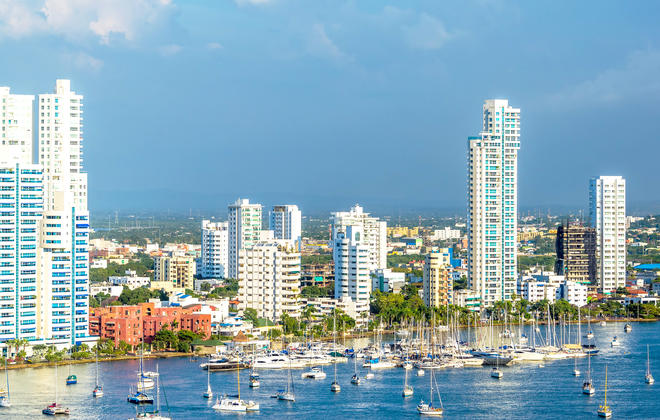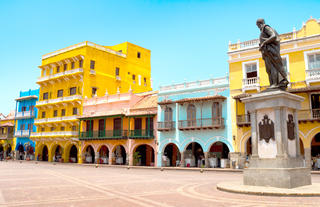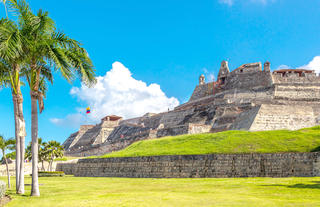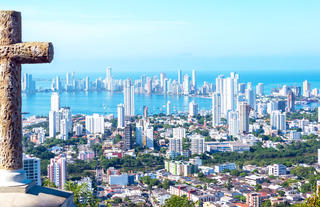Located 2600m above sea level at the base of the Guadalupe and Monserrate mountains is Colombia’s capital and one of South America’s leading cultural destinations. Patrons of the arts are spoilt for choice with the city’s museums, art galleries, stage theatres, and national monuments. So impressive is Bogota’s collection of libraries and academic institutions that the city has earned itself the nickname 'The Athens of South America'. The historic district of La Candelaria boasts many of these offerings as well as some truly breathtaking historic architecture. Must-see attractions in Bogota include the weird and wonderful Museo Botero; famous Museo del Oro, filled with astonishing displays of gold items and pre-hispanic art; and the atmospheric, grandiose Church of San Francisco, with origins dating to around 1557.


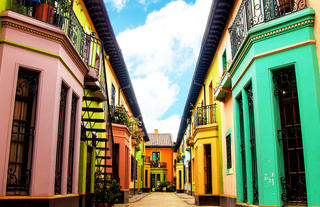
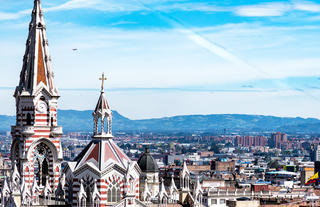

Villa de Leyva is said to be one of the most charming villages in Colombia, with its colonial architecture, cobbled streets, whitewashed buildings and mild climate. Located in the Boyacá department of Colombia, and a three-hour drive from the capital, Bogotá, this picturesque village was declared a national monument in 1954 and is a tourist haven. Its 400-year-old plaza, the largest open square in South America, hosts regular markets and festivals, making it a hub of activity on weekends. Don’t leave town without heading into the spectacular surrounding mountains – either on foot, bicycle or horseback – where waterfalls, lakes, caves and archaeological sites await.





Located within close proximity to the tiny traditional village of Guane in the Santander Region, the charming heritage town of Barichara is said to be one of the most beautiful small towns in Colombia. It features colonial-style architecture, whitewashed houses with red clay tiled roofs, and streets paved with cobblestones. This laid-back bohemian town is known as a popular location for films. Major attractions include Capilla de Santa Barbara, the Cathedral of the Immaculate Conception, the Suarez River Canyon, the Museum of Guane, Cementerio Barichara and San Gil. Visitors can look forward to an array of activities such as rafting, hiking, paragliding and sightseeing.





Perched on a plateau of the Andes mountains, Bucaramanga is the capital of the department of Santander, located in northern Columbia. Buca, as it is commonly known, has an appealing duality to its character: known as the ‘City of Parks’, by day it is a tranquil place with many relaxing green spaces (including Parque Santander), but - at sundown - the city comes alive with vibrant nightlife options. Bucaramanga is also home to some good cultural sights: don’t miss the Sagrada Familia Cathedral, an 18th-century structure with fine stained-glass windows, or the Museo de Arte Moderno de Bucaramanga, which features exciting rotating exhibitions. For outdoor enthusiasts, the nearby Parque Nacional Chicamocha offers a comprehensive range of outdoor activities in a spectacular canyon setting, and San Gil is also a premiere adventure sports hub.





The port city of Cartagena is set on Colombia’s Caribbean coast. It is a popular beach destination boasting a balmy tropical climate. This Caribbean coastal city offers visitors a mix of the enchanting old and the exciting new. Step into the cobbled streets of the walled city, a World Heritage Site with 400-year-old stone walls covering 13 kilometres, and explore an intricate maze of pastel-hued homes, colonial architecture, churches, and historic sites such as the Palace of the Inquisition. Outside the old city lies the chaotic bustle that is typical of most South American cities - an experience best sampled by visiting the Mercado Bazurto central market. Don't miss the opportunity to venture to the south of the city where tourists are treated to trendy cafes, restaurants and a buzzing nightlife.
